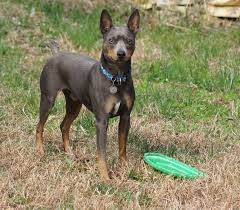
The American Crested Sand Terrier is not as well-known as other breeds of dogs. Despite its name, the breed did not appeared in America, like many other American breeds, but in Africa; that is why it is also called the Abyssinian Sand Terrier, or African Hairless Dog. It was first bred as a companion dog for African tribesmen. The name of Sand Terrier is suggestive for its fur color and also for its skin aspect.
Because of their hairless body, these dogs are perfect companions for owners that are allergic to fur. They tend to be cleaner and quite odorless, comparing with other dogs.
It is very difficult to find such a dog, because there are not many owners of this breed, but their bloodline can be observed in many other breeds, like the Chinese Crested Dog, its better-known cousin.
The American Crested Sand Terrier does not look like a terrier, but more like a German dog with a pit bull face. They are not very tall dogs, their height reaching an average value of 39-52 cm for males, and a little less for the females. They weigh around 9.5 - 18 kg.
The colors of the dog are in shades of bronze, elephant-gray, grayish-black, black, and pale sandy or mottled, with chocolate or with white spots (there are a few albino dogs that are completely white). The dogs are hairless all over their body except for the head, where they have a tuft of upright hair and this gives them a rather funny aspect. Because of the lack of hair, this breed does not need to be brushed or combed, just a bath every once in a while will do, in order to prevent the dog's skin from drying.
The American Crested Sand Terrier has almond shaped, medium-sized eyes; the ears are large, shaped like those of a bat, and thin in texture; the nose is usually black, but there are dogs with noses the same colors of their coats, or pink.
Because of their bald skin, they require special attention and a comfortable environment, in which the temperature and the humidity must be well-balanced, in order to protect the dog from flu or lung diseases.
They can also get easily hurt. Their skin has no ability of protecting them from extreme temperatures and this is the reason why some breeders think this dog could not have come from Africa, but more likely from Portugal. Their hairless skin is not able to protect them against sun burns either, and that is why it is advisable to apply some sun-screen on the dog before going out in hot summer days.
The American Crested Sand Terrier loves to exercise, and requires moderate daily activities a good hour of jogging along the owner's bicycle should be enough for them.
We really don't know much about the breed's history. There are two opposite opinions: one is that the breed has been extinct since 1800, when the last one was exposed in the Walter Rothschild Zoological Museum, but no visitor felt the need to become the owner of such a dog; the other opinion is that they are still a living breed, and that there are still some people who actually own the original American Crested Sand Terrier.




